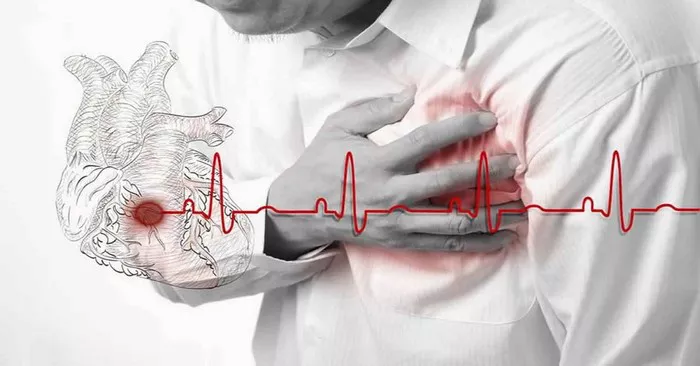Angina pectoris, commonly referred to as angina, is a condition characterized by chest pain or discomfort caused by reduced blood flow to the heart muscles. It is often a symptom of underlying heart disease or coronary artery disease (CAD). Understanding the causes and contributing factors of angina is crucial for diagnosis, treatment, and management of this condition.
Coronary Artery Disease (CAD)
One of the primary causes of angina pectoris is coronary artery disease (CAD). CAD occurs when the coronary arteries, which supply oxygen-rich blood to the heart muscle, become narrowed or blocked due to the buildup of plaque. This plaque is made up of cholesterol, fatty substances, calcium, and other substances found in the blood.
As the coronary arteries narrow, the heart muscle may not receive an adequate supply of oxygen-rich blood, especially during times of increased demand such as physical activity or emotional stress. This mismatch between oxygen supply and demand can lead to chest pain or discomfort, known as angina.
Risk Factors for Angina Pectoris
Several risk factors increase the likelihood of developing angina pectoris:
1. Smoking: Tobacco use is a significant risk factor for CAD and angina. Smoking damages the blood vessels, accelerates plaque buildup, and reduces the oxygen-carrying capacity of the blood.
2. High Blood Pressure (Hypertension): Elevated blood pressure puts strain on the heart and blood vessels, increasing the risk of CAD and angina.
3. High Cholesterol Levels: Elevated levels of LDL (low-density lipoprotein) cholesterol, often referred to as “bad” cholesterol, contribute to plaque formation in the arteries, narrowing the coronary arteries and leading to angina.
4. Diabetes: Diabetes, especially when poorly controlled, can damage blood vessels and increase the risk of CAD and angina.
5. Obesity and Sedentary Lifestyle: Being overweight or obese, along with a lack of physical activity, is associated with a higher risk of CAD and angina.
6. Family History: A family history of CAD or early-onset heart disease increases the risk of developing angina.
7. Age and Gender: Men are more likely to develop angina at a younger age than women; however, women’s risk increases after menopause. Aging is also a risk factor, as the arteries may become stiffer and less flexible over time.
8. Stress and Anxiety: Emotional stress and anxiety can trigger angina episodes in susceptible individuals by increasing heart rate and blood pressure.
Other Causes and Triggers
In addition to CAD and its associated risk factors, several other conditions and factors can contribute to or trigger angina pectoris:
1. Coronary Artery Spasms: Some individuals may experience angina due to spasms or contractions of the coronary arteries, leading to temporary reduction or cessation of blood flow to the heart muscle.
2. Physical Exertion: Engaging in strenuous physical activity or exercise, especially in individuals with underlying heart disease, can precipitate angina episodes.
3. Cold Weather: Cold temperatures can constrict blood vessels and increase blood pressure, potentially triggering angina in susceptible individuals.
4. Heavy Meals: Consuming large, heavy meals can temporarily increase the workload on the heart and lead to angina in individuals with compromised blood flow to the heart.
5. Emotional Stress: Strong emotions such as anger, anxiety, or excitement can stimulate the release of stress hormones, which may affect heart function and trigger angina episodes.
6. Exposure to Tobacco Smoke: Even non-smokers can experience angina if exposed to secondhand smoke, as it can constrict blood vessels and impair oxygen delivery to the heart.
Diagnosis and Treatment
Diagnosing angina pectoris involves a comprehensive evaluation of medical history, risk factors, symptoms, physical examination, and diagnostic tests. These tests may include electrocardiogram (ECG), stress testing, echocardiography, coronary angiography, and blood tests to assess cardiac enzymes and lipid levels.
Treatment strategies for angina aim to relieve symptoms, improve quality of life, and reduce the risk of complications. These may include:
1. Medications: Nitroglycerin, beta-blockers, calcium channel blockers, and antiplatelet drugs are commonly prescribed to manage angina symptoms and prevent complications.
2. Lifestyle Modifications: Adopting a heart-healthy lifestyle with regular exercise, a balanced diet low in saturated fats and cholesterol, smoking cessation, stress management techniques, and weight management can significantly reduce the risk of angina and CAD.
3. Interventional Procedures: In cases where medications alone are not sufficient, interventions such as angioplasty with stent placement or coronary artery bypass grafting (CABG) may be recommended to improve blood flow to the heart.
4. Cardiac Rehabilitation: Participation in a structured cardiac rehabilitation program can help individuals with angina and CAD improve cardiovascular fitness, manage risk factors, and enhance overall well-being.
Conclusion
Angina pectoris is a common symptom of underlying heart disease, particularly coronary artery disease. Understanding the causes, risk factors, and triggers of angina is essential for early detection, appropriate management, and prevention of complications. By addressing modifiable risk factors, adopting a heart-healthy lifestyle, and following medical recommendations, individuals with angina can effectively manage their condition and improve their cardiovascular health.


